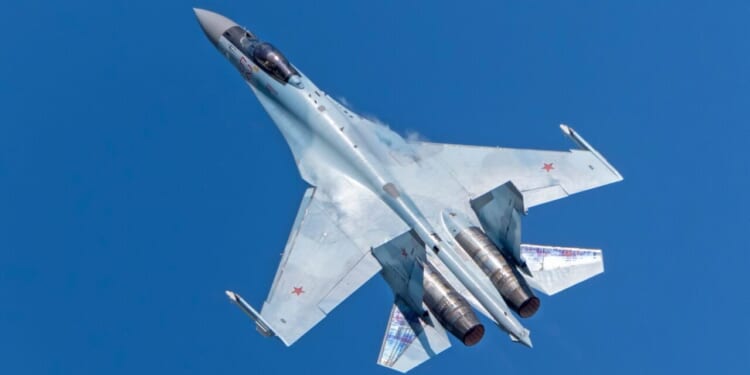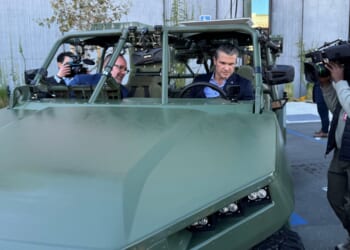Beijing is trying to push Canberra and other Western nations out of the South China Sea.
A Su-35 fighter jet flown by the Chinese People’s Liberation Army Air Force (PLAAF) intercepted an Australian surveillance aircraft over the South China Sea this week. In response to the hostile incident, Canberra accused Beijing of practicing an “unsafe and unprofessional interaction.” The Australian Government published its concerns in a statement, detailing that “The PLA-AF aircraft released flares in close proximity to the [Royal Australian Air Force] RAAF P-8A aircraft. This was an unsafe and unprofessional maneuver that posed a risk to the aircraft and its personnel.”
Back in 2023, U.S. Department of Defense (DoD) officials reported that Chinese fighters were increasingly engaging in unsafe interceptions of American and allied aircraft in international airspace. From 2021 to 2023, the DoD noted that more than 180 similar incidents occurred. Analysts have assessed that through these malign actions, Beijing is trying to push Canberra and other Western nations out of the South China Sea. The United States, the UK, Japan, the Philippines, and Australia have conducted collaborative training drills in these waters to deter such hostilities.
In response to Australia’s recent allegations, the spokesperson for the air force of the PLA Southern Theater Command, Senior Colonel Li Jianjian, said: “An Australian P-8A aircraft intruded into China’s territorial airspace over the Xisha Qundao without the approval of the Chinese government, and the Chinese People’s Liberation Army (PLA) Southern Theater Command organized naval and air forces to track and monitor the Australian aircraft, take forceful countermeasures and warn it away in accordance with laws and regulations.”
The Su-35
Beijing received its first batch of Soviet-designed Su-35 fighter jets back in 2016. Designated by NATO as the “Flanker-E/M,” the USSR-era platform has a flight range of more than 2,000 miles and a service ceiling of nearly 60,000 feet. Initially, in the early 1990s, China purchased the Su-27 platform from Russia. However, since Beijing proceeded to essentially reverse-engineer the jet to develop its homegrown J-11, additional transactions concerning the Su-27 were halted. However, Russia ultimately agreed to sell two dozen of its Su-35 fighters to China shortly after. This arrangement is largely viewed by analysts as Beijing’s method to acquire Russian technology for its own domestic purposes down the line.
Two Sturn/UFA AL-31F 117S turbofan engines power the Flanker-E/M, allowing the platform to fly at speeds in excess of Mach 2.25 (times the speed of sound). Notably, this top speed puts the Su-35 at the same level as the US-made F-22 Raptor. While the Su-35 is technically a Soviet-era design, several key enhancements over the years have been incorporated into the platform to ensure its relevance in the modern era. One of the more significant improvements made to the Su-35 platform is the introduction of a weapons-control system featuring a phase-arrayed radar with pulse-Doppler tracking. This new N011 Bars system enables the Flanker to track targets below the horizon, allowing the 4.5-generation fighter to better interact with ground-based targets.
Considering the Flanker-E/M’s reputation as one of Russia’s more formidable export designs, China’s possession of this platform is concerning to its adversaries. Beijing will likely continue to lean on its Su-35 fleet in the future to harass Western aircraft and warships alike in the South China Sea.
About the Author: Maya Carlin
Maya Carlin, National Security Writer with The National Interest, is an analyst with the Center for Security Policy and a former Anna Sobol Levy Fellow at IDC Herzliya in Israel. She has by-lines in many publications, including The National Interest, Jerusalem Post, and Times of Israel. You can follow her on Twitter: @MayaCarlin. Carlin has over 1,000 articles published over the last several years on various defense issues.
Image: aarrows / Shutterstock.com


















